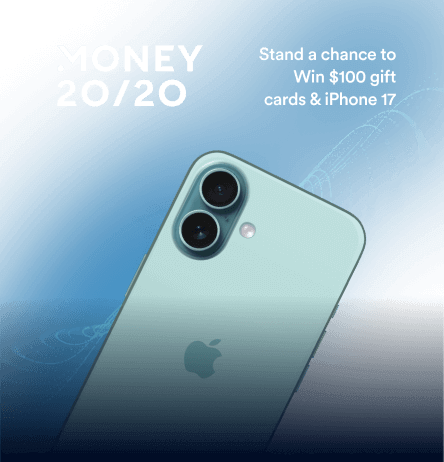It’s basically mind control.
Everything from your icon, design, and user experience can be optimized through emotional branding to establish loyalty among your users. Consumers can have highly emotional reactions not just to big brands like Apple, but even to smaller companies like yours.
The goal of emotional branding in mobile apps is to shape how your brand is perceived by your users. Learn how you can use emotion to further connect with your users by reading our guide below or get the gist by jumping to our infographic.
What is Emotional Branding?
Emotional branding is the process of forming a relationship between a consumer and a product or brand by provoking their emotions. Marketers achieve this by creating content that appeals to the consumer’s emotional state, ego, needs, and aspirations. 
Marc Gobé created the concept of emotional branding over 20 years ago and detailed it in his book The New Paradigm for Connecting Brands to People. His philosophy is based on the observation that connections can take place on an emotional level in relationships between brands and people.
Emotional branding plays to humans’ natural desire for love, power, emotional security, and ego gratification, all of which are subconscious and can be tapped into by emotionally triggered marketing.
This tactic can be over 50% more effective than a non-emotionally targeted advertisement.01
Emotional Branding vs. Emotional Advertising
Although it may seem self-explanatory, emotional advertising is a complex practice and when done incorrectly can leave your audience feeling confused. With careful consideration and use of emotional appeal, however, emotional advertising can be highly effective.
Emotion can be applied more directly in advertising, such as in a specific ad or campaign. Each emotional ad contributes to the emotional branding strategy — emotional ads are like the individual building blocks that create structural integrity of the brand.
Many companies will create emotional ads in response to major events, while also promoting their products or services. For example, following the US travel ban in 2018, Airbnb launched a campaign pushing the idea of a global community in their “Let’s Keep Traveling Forward” advertisement. Making a statement like this is a bold and effective brand positioning strategy. 
Emotion and the Hierarchy of Needs
Maslow’s Hierarchy of Needs theory classifies emotional motivation through biological and social needs.02 Humans need to cover their physiological needs (food, shelter, air, water) before they can work their way up the pyramid to meet their emotional needs: esteem (respect, status, strength) and self-actualization.
What if Maslow’s theories of human needs could be applied to branding? How have the world’s most recognizable brands been so successful at captivating large populations and applying principles of human nature?
Below, we have transposed Apple’s emotional branding strategy over the years to Maslow’s Hierarchy of Needs: 
Finding out what needs your product or service satisfy and where your value proposition fits within the pyramid can help you narrow down which emotional appeals to target.
Emotional Branding Appeals to Ethos, Pathos, and Logos
Remember Aristotle? He’s the one we can thank for the three foundations of persuasive marketing techniques: ethos, pathos, and logos.
When you are able to balance all three of them you have an emotionally powerful brand.
These techniques are categorized into three groups based on how rhetoric is used in arguments. These three groups are:
1. Ethos: Appeal to Credibility and Ethics
“Three out of four doctors recommend X over the competitors.”
When a doctor or another influencer endorses a product or service, an advertiser is appealing to ethos. Ethos in branding can take many forms: quoting experts in a field, citing sources, testimonials from customers, and case studies, for example.
Appealing to ethos builds trust and credibility within your industry and establishes your brand as the authority in the space.
2. Pathos: Appeal to Empathy
“X: Live, Laugh, Long-Term Retention.”
Pathos motivates consumers to take action by creating a sense of urgency, a fear of missing out, a sense of belonging, and more, as long as it is done carefully and doesn’t make the consumer feel like their emotions are being manipulated. Non-profit organizations consistently use pathos to establish empathy and bolster their branding strategy.
3. Logos: Appeal to Logic and Reason
“X is effective against 99.9% of churn.”
Logos, Aristotle’s most persuasive pillar of the three, is also the most dependent on the other pillars. Just pointing out facts, statistics, or features to consumers usually isn’t enough to convince them to take action. Show your audience what your product can do for them, and try to make a connection between their emotions and your logic.
All three of Aristotle’s principles don’t need to be applied to every situation, but keeping them in mind when you’re building an emotional strategy can increase your persuasive prowess. 
The Neuroscience of Emotional Branding
While many companies go about building their brands as more of an art and less of a science, some companies look at how they can adapt their brand awareness strategies to influence customers on a psychological level with a tactic called “neuromarketing.”
Neuroscience is a field of research that studies the cognitive and affective responses of human beings. This translates into neuromarketing when we start applying these ideas to how they might impact a consumer’s brain responses to stimuli.
When we approach branding from a scientific perspective instead of design perspective with eye-tracking, facial coding, and EEG (electroencephalogram), we can better analyze a person’s reaction and understand exactly how a person will emotionally respond to an advertisement or brand.
Looking more into the science of how to effectively market to consumers has revealed lots of powerful statistics to help marketers reach their audiences:
- 90% of buying decisions are made subconsciously.
- Human beings process visuals 60,000 times faster than text.
- 50% of a brand experience is based on emotion.03
The Benefits of Emotional Branding
Using neuroscience techniques in conjunction with branding and marketing strategies yields some pretty compelling results. Targeting consumers with more effective ads means that you’ll better be able to engage your audience.
When you’re engaging your audience, you’re building a relationship with them, which translates into a remarkable increase in customer lifetime value. Your budget (or accountant) will thank you too. That’s because you’ll be spending way less while simultaneously instilling customer loyalty, which works wonders for your ROI.
Why is it important to take advantage of this strategy? Because 90% of buying decisions are made subconsciously, but 89% of consumers don’t feel a personal connection to the brands they’re buying. This means there’s a huge opportunity to differentiate your business from your competition by working to establish an emotional connection.04 
Brands that have an emotional component to their brand are more likely to be viewed favorably by their customers, compared to some of their competitors that can feel like soulless corporations.
Insurance is a dry industry, but GEICO has done a great job of bringing an emotional component into its branding strategy. For years, their advertisements have included a personable green gecko with a British accent who the American public fell in love with.
Compare this to The General Insurance company’s branding strategy and you will quickly see how emotional branding can impact awareness and performance. GEICO is the second-largest insurance company by market share, and the General isn’t even in the top 10.05
Let’s look at how other brands have emotionally optimized their brands successfully:
Emotional Branding Examples
1. Always: #LikeAGirl
Always sought to turn the tables on the term “…like a girl” in this campaign which appeals to emotion by making women feel empowered and confident. Despite the controversy that followed, the commercial went on to win an Emmy, a Cannes Grand Prix award, and the Grand Clio award.06, 07
2. Patagonia: Public Lands
Patagonia evokes a feeling of responsibility and its customers identify with the company’s commitment to the environment. Patagonia’s fight to conserve open spaces, tear down dams, and restore the environment has created a loyal base of customers that will unwaveringly support their brand. 
3. Petcube: Pet Parents
Petcube’s interactive pet cameras bring users joy by being able to engage with their pets wherever they are. Their branding shows “pet parents” laughing and smiling as they play with their pets through the apps on their smartphones.
4. Calm: Meditation Made Easy
The emotion is in the name. Calm’s app leads users through guided meditation and gentle stretches to help them relax and sleep more easily. Calm’s branding uses soothing gradients and soft fonts to help drive their decompressing mission home. 
5. Google: Year In Search
Google’s Year in Search digest sums up the most searched phrases over each year and aims to create a feeling of a community based on search. While they often include polarizing search topics and events, Google is always sure to highlight important moments that brought the world together, building their users’ emotional connection to the brand.
Emotional Branding Best Practices
1. Focus on Emotion Through Visuals
Obviously, emotions are paramount to effective neuromarketing because of their influence on the subconscious. In fact, nearly 50% of the brain is visual processing power.08 Pay attention not only to your visual identity but also to logos, fonts, colors, depth, and movement to optimize for positive emotional experiences.
2. Personalize Your Interactions
Appeal to the self-serving nature of the human brain by making your users feel happy, satiated, and important. Make your interactions with them feel unique and genuine. Create options for customization and use targeted sales and marketing techniques to create interactions that feel like they’re tailored to each individual user.
3. Inspire Engagement
Engaging with your users makes them feel more personally connected to your brand and elicits more emotional reactions. Start engaging your users more by connecting with influencers, sharing user-generated content on social media, and replying to reviews and comments to make lasting connections.
4. Make Your Users Comfy
When it comes to emotional branding, consistency is key. Make sure you use the same colors and are appealing to similar emotions to keep users from getting confused.
5. Respond to Public Relations Issues Quickly
Timing is key when responding to large issues, and consumers appreciate a quick response when companies make a mistake. When Johnson & Johnson had a case of tampering with Tylenol they immediately pulled all inventory from shelves to protect consumers (even though there was no evidence of further contamination).
Time to Get Emotional With Your Branding
Appealing to emotion is a proven tactic in attracting, connecting with, and encouraging your audience to use your products and services.
Understanding how your branding and marketing efforts impact the lives of individual users is crucial for boosting the user experience. Businesses that leverage emotional branding and advertising are rewarded with user retention and increased customer lifetime value.
Discover how CleverTap’s rich user profiles, psychographic, and RFM segmentation can uncover your brand’s emotional connection to customers.
Decisions are generally made subconsciously and most of the business of life happens through our initial emotional reactions, well below the threshold of awareness.09
Choosing colors, fonts, messages, and the overall “feel” of your business doesn’t have to be daunting and complicated if you’re thoughtful and pay attention to your users reactions.
Using emotions through your branding and marketing can create loyal, life-long brand ambassadors for your business.
Embed this infographic in your own blog using this code:

See how today’s top brands use CleverTap to drive long-term growth and retention
Subharun Mukherjee 
Heads Cross-Functional Marketing.Expert in SaaS Product Marketing, CX & GTM strategies.
Free Customer Engagement Guides
Join our newsletter for actionable tips and proven strategies to grow your business and engage your customers.















































